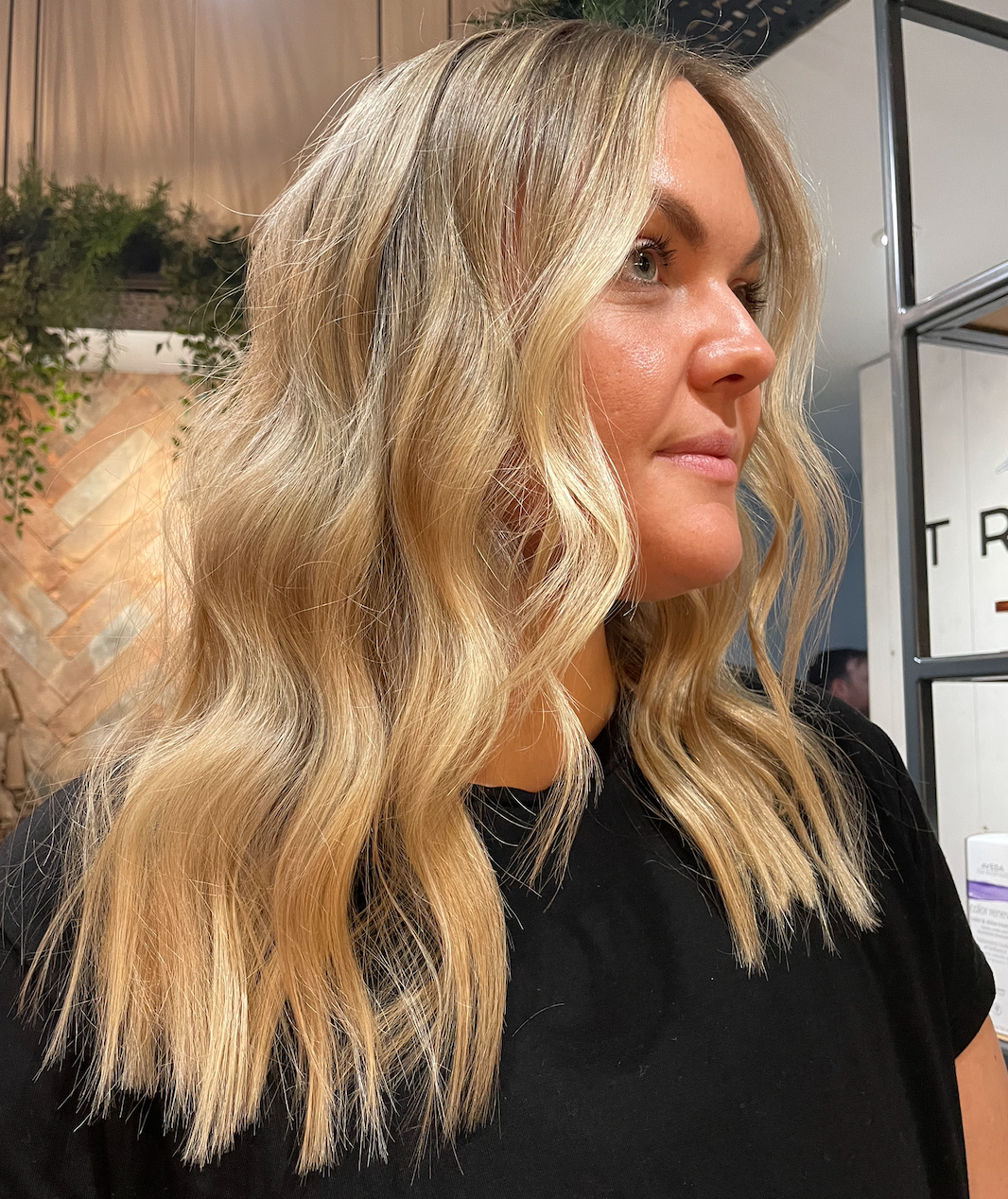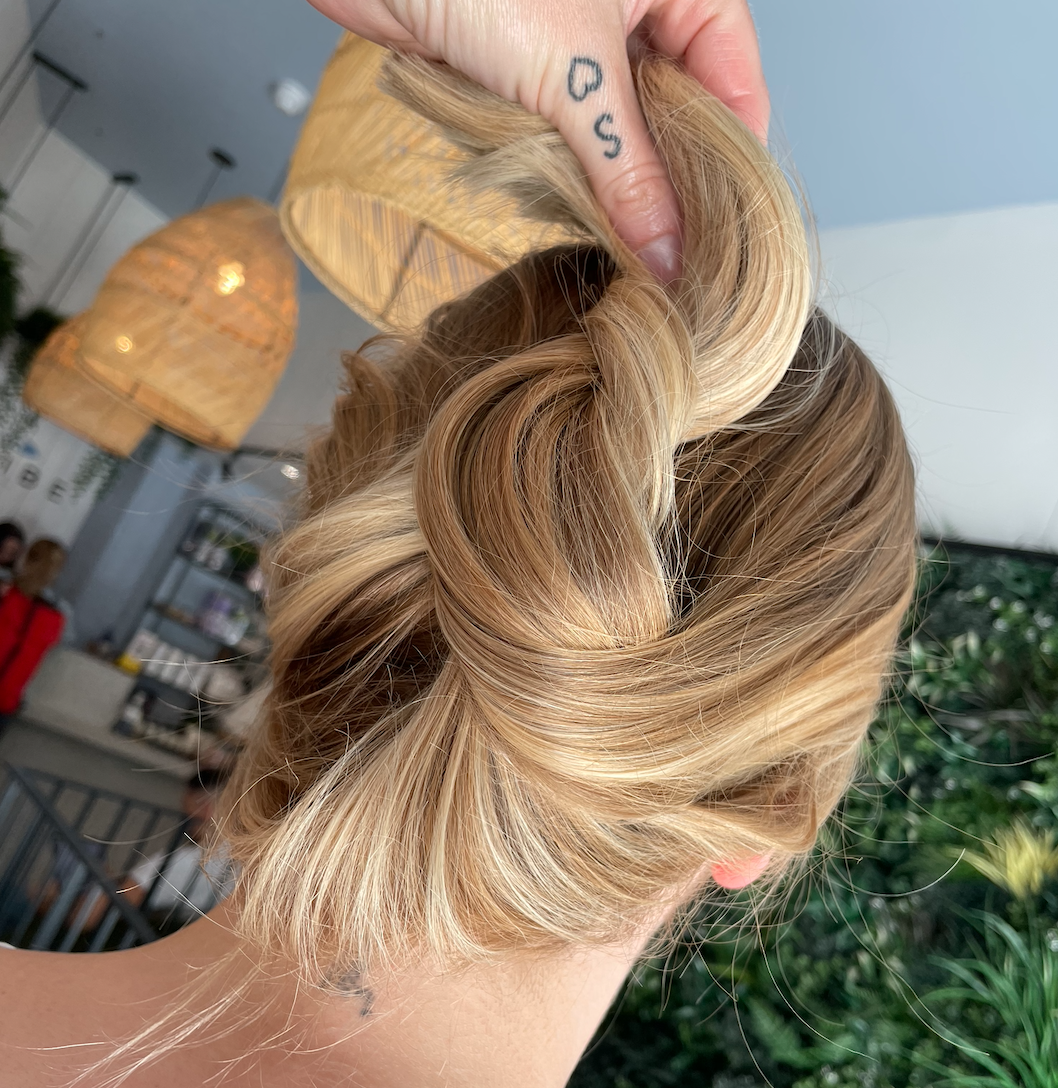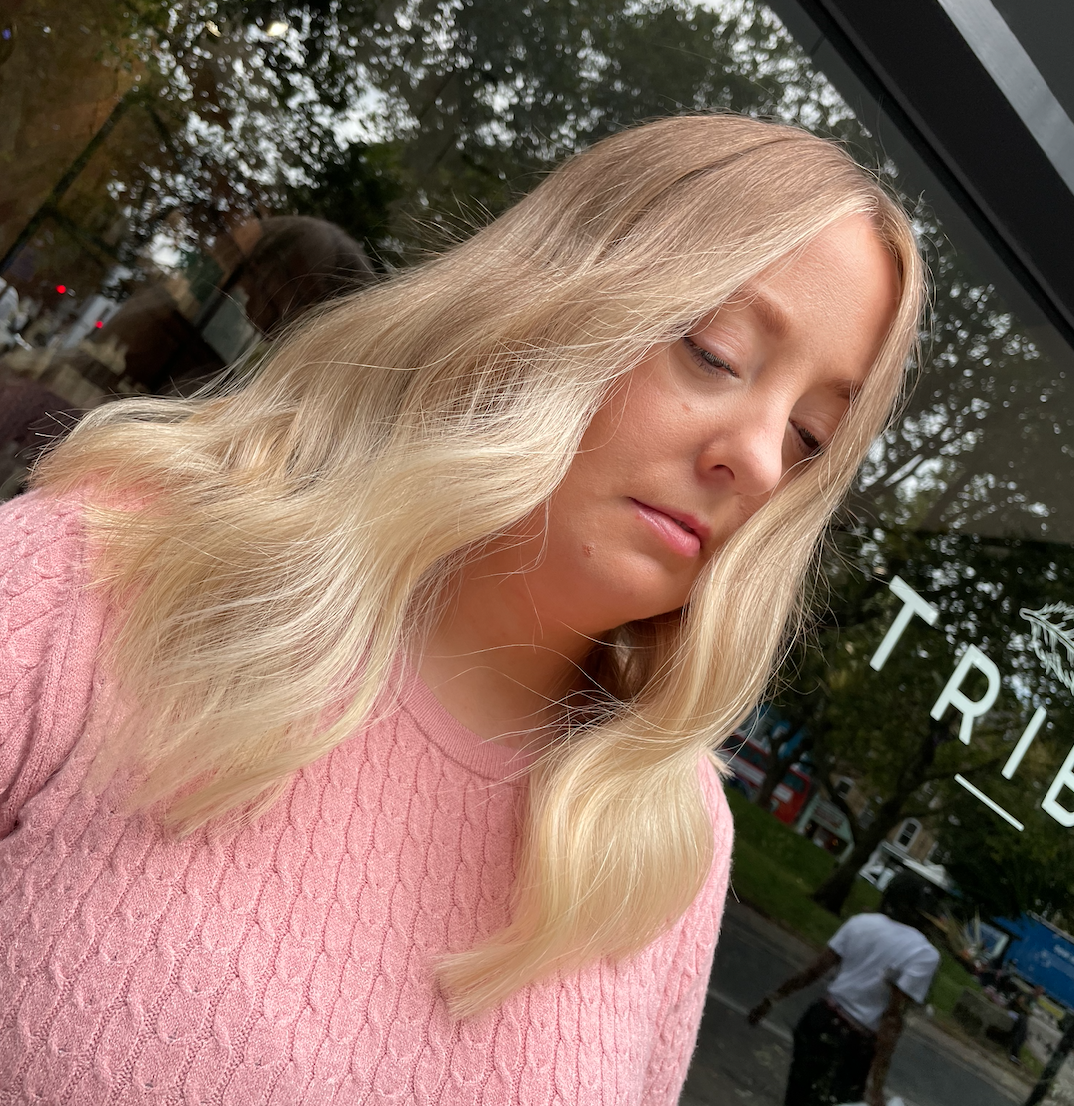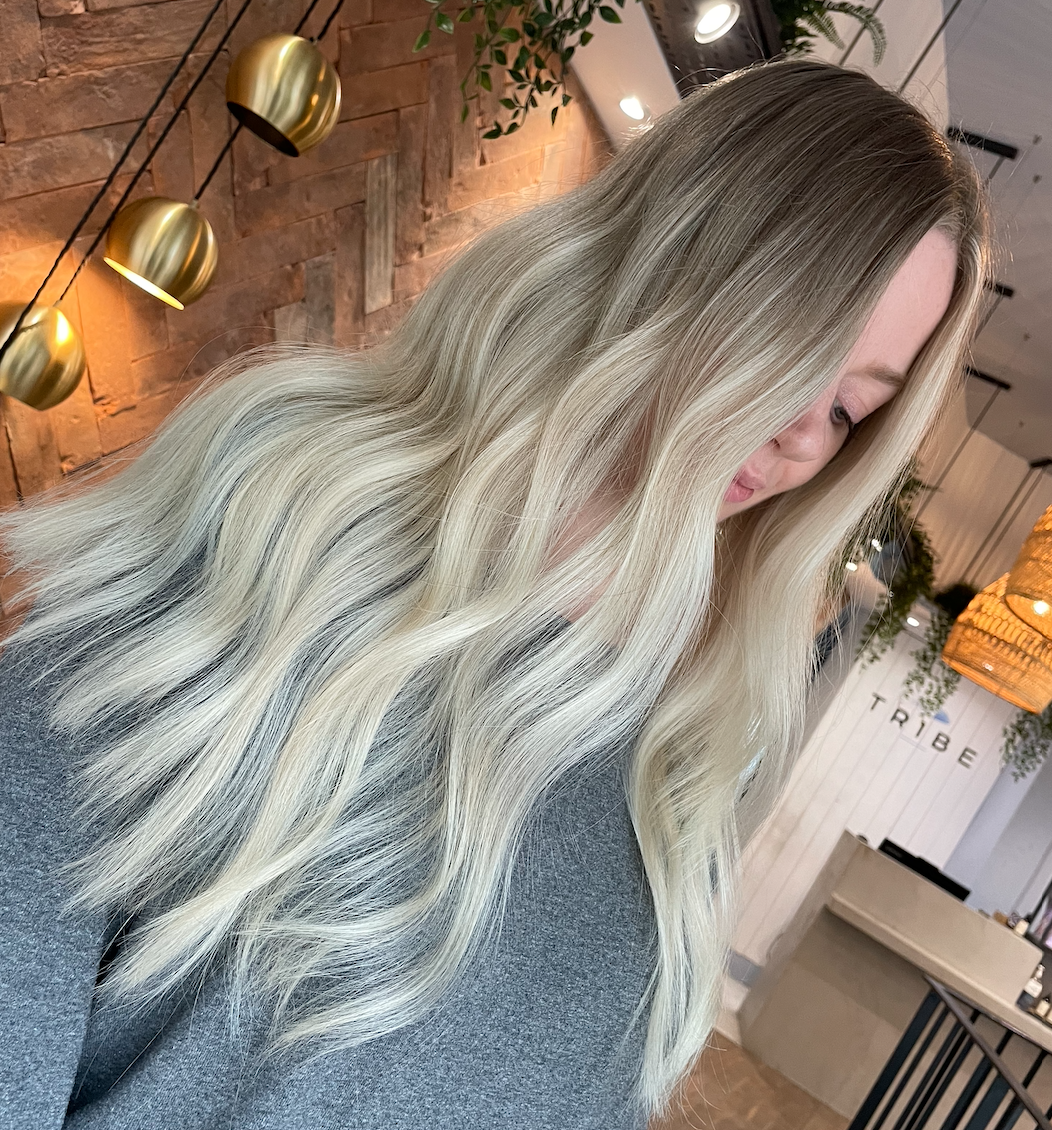Base breaking - when it will, and won’t, work.
By Humankind Hair Director Anneliese Hesse.
3 ½ minute read.
You've probably heard of base breaking by now.
It surfaced a few years ago, seemed to die a death, and now is back all over the internet - largely in the form of ‘Scandi hairlines’, but we’ll focus more on that exact trend next time.
If you've tried a base break previously maybe you loved it, or maybe you found it went too warm and created a regrowth.
Here's why, when and how it works...
What is 'base breaking'?
Breaking the base refers to slight oxidation on natural, uncoloured hair, which results in subtle lift and warmth.
The key words here are 'subtle' and 'warmth'.
But we'll come back to that in a minute.
When to do it, and why?
Base breaking is sometimes done to the remaining hair left between highlights or balayage.
The objective is to minimise contrast between the lightened pieces and the natural colour, by slightly lightening the natural colour.
Sometimes it can be done to all of the remaining natural hair, other times just the hairline may be done, to soften the look when hair is worn up.
When does this work, and when doesn't it?
The most important thing to understand is this:
A base break will always go warm.
The degree of warmth depends on the hair. When you break the base, you disturb the natural pigments and begin to expose the hair's underlying warmth. Darker hair will begin to shine reddish brown to orange, and blonde hair will shine yellowish. There is however a huge variation to this because everybody's distribution of pigment is unique. You can find out more about distribution of pigment here.
A base break can work well if your overall target result has a degree of warmth. If your overall target result is cool, it probably won't work so well.
Base 7 and above: YES for warm/golden/neutral results
Base 6 and below: YES for warm, golden, copper and red results
Cool result on any level: NO
Another consideration is that a base break will create a higher maintenance colour in that a slight regrowth may be visible as the hair grows. Often when you rinse a base break, the lift looks super subtle but when the client comes back next time it's surprising how much of a difference there is between this and the natural root.
Top two images: Examples of when base breaks may be suitable - light and dark bases, both with a warm result.
Bottom two images: Examples of when base breaks may not be suitable - light and dark bases both with a cool result.
How to do it
It's usually best to do your base break after the lightener has been rinsed and shampooed, but before toning. You can do it at the basin on damp, towel dried hair.
Mix the lightest shade (level 10, or clear for example) in your permanent colour line, with either 10 or 20vol. For hair that lightens very quickly use the lower developer.
Apply quickly to the natural hair and do not walk away! You are aiming for the natural colour to just start shifting - you'll see a subtle glow start to appear and this is when it's time to rinse.
Remember those key words? Subtle and warmth.
The lighter you lift, two things happen:
It gets warmer/brighter
Regrowth gets worse
Top tips
- Tone your lightened pieces afterwards, but do not attempt to tone anything too cool. It will make the base break look super warm in comparison.
- Remember to check your client is happy with the potential of noticing more regrowth than usual.
- Do not try to use a semi, demi, or any acidic colour line. You need the power from the alkalinity. For more info on permanents, demi's and semi's and to understand the key differences between acid and alkaline colours, check out Hair and Colour Science.
Like what you see?
Learn how to create all of the looks pictured above on Balayage Breakdown.






